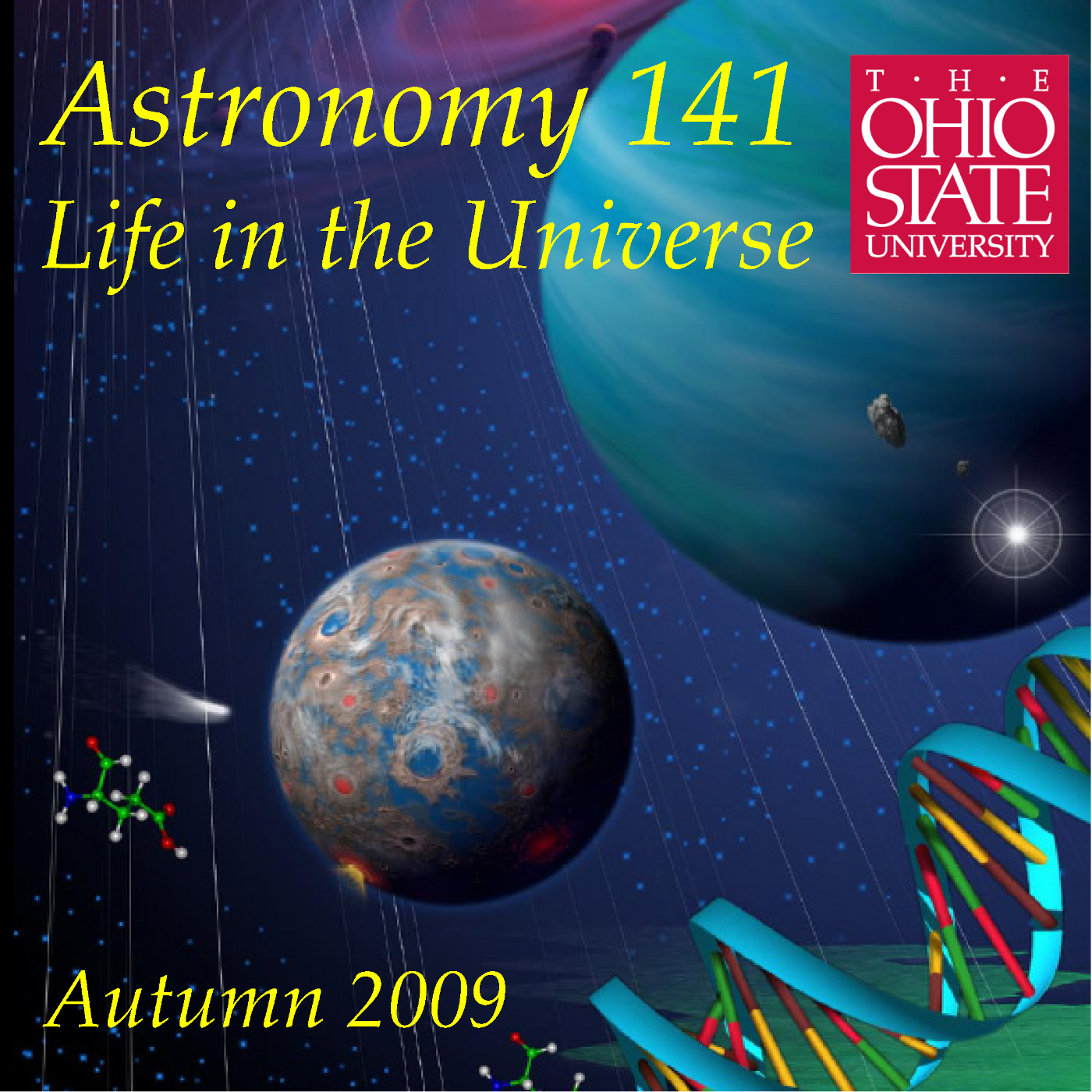Lecture 30: Goldilocks and the Three Planets
Description
Why is the Earth habitable today but Venus and Mars not? This lecture
explores the question of planetary habitability from the perspective of
the stability of liquid water on the surface of planetary bodies. We
will see how the amount of sunlight and the greenhouse effect in the
atmosphere combine to create a classic Goldilocks problem: whether or
not a planetary surface has stable liquid water is a question of not
being too hot or too cold. This defines the Habitable Zone for the
present-day Sun. However, the size of a planet also plays a role, and
we will expand the concept of habitability to include the type of
atmosphere a planetary body can or cannot retain. Finally, because the
Sun changes brightness slowly over its lifetime, the location of the
habitable zone is time-dependent. We will define the Continuous
Habitable Zone, and discuss implications, and limitations, of the idea
of habitable zones, looking forward expanding our search for life to
worlds around other stars. Recorded live on 2009 Nov 5 in Room 1005
Smith Laboratory on the Columbus campus of The Ohio State University.
More Episodes
Course finale and summary. We look back over where we've been the last
eleven weeks, and bring together all of the main themes of this course
on Life in the Universe. Recorded live on 2009 Dec 4 in Room 1005 Smith
Laboratory on the Columbus campus of The Ohio State University.
Published 12/04/09
Published 12/04/09
How will life, the Universe, and everything end? This lecture looks at
the evolution of our expanding Universe to project the prospects for
life into the distant cosmological future. Recent observations show
that we live in an infinite, accelerating universe. I will trace the
evolution of the...
Published 12/03/09


